ZHCSN73B January 2021 – January 2022 TPS785-Q1
PRODUCTION DATA
- 1 特性
- 2 应用
- 3 说明
- 4 Revision History
- 5 Pin Configuration and Functions
- 6 Specifications
- 7 Detailed Description
-
8 Application and Implementation
- 8.1 Application Information
- 8.2 Typical Application
- 9 Power Supply Recommendations
- 10Layout
- 11Device and Documentation Support
- 12Mechanical, Packaging, and Orderable Information
封装选项
机械数据 (封装 | 引脚)
散热焊盘机械数据 (封装 | 引脚)
订购信息
10.1.1 Additional Layout Considerations
The high impedance of the FB pin makes the regulator sensitive to parasitic capacitances that may couple undesirable signals from nearby components (especially from logic and digital devices, such as microcontrollers and microprocessors); these capacitively coupled signals may produce undesirable output voltage transients. In these cases, TI recommends using a fixed-voltage version of the device, or isolating the FB node by placing a copper ground plane on the layer directly underneath the LDO circuitry and FB pin to minimize any undesirable signal coupling.
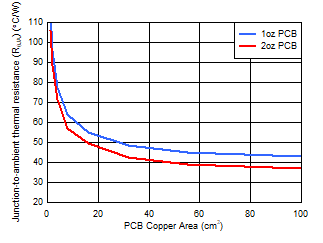
| 4-layer PCB |
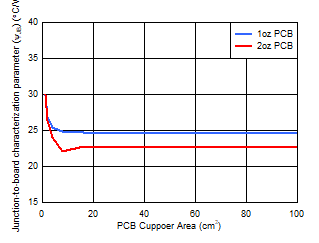
| 4-layer PCB |
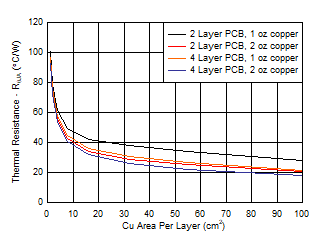 Figure 10-5 Junction-to-Ambient
Thermal Resistance (RθJA) vs PCB Copper Area (KVU
Package)
Figure 10-5 Junction-to-Ambient
Thermal Resistance (RθJA) vs PCB Copper Area (KVU
Package)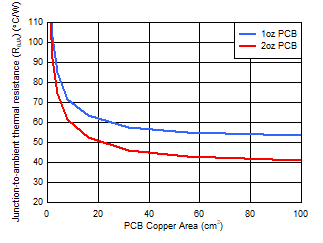
| 2-layer PCB |
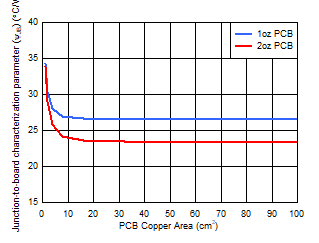
| 2-layer PCB |
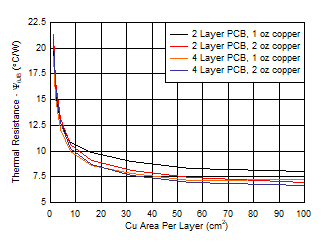 Figure 10-6 Junction-to-Board
Characterization Parameter (ψJB) vs PCB Copper Area (KVU
Package)
Figure 10-6 Junction-to-Board
Characterization Parameter (ψJB) vs PCB Copper Area (KVU
Package)